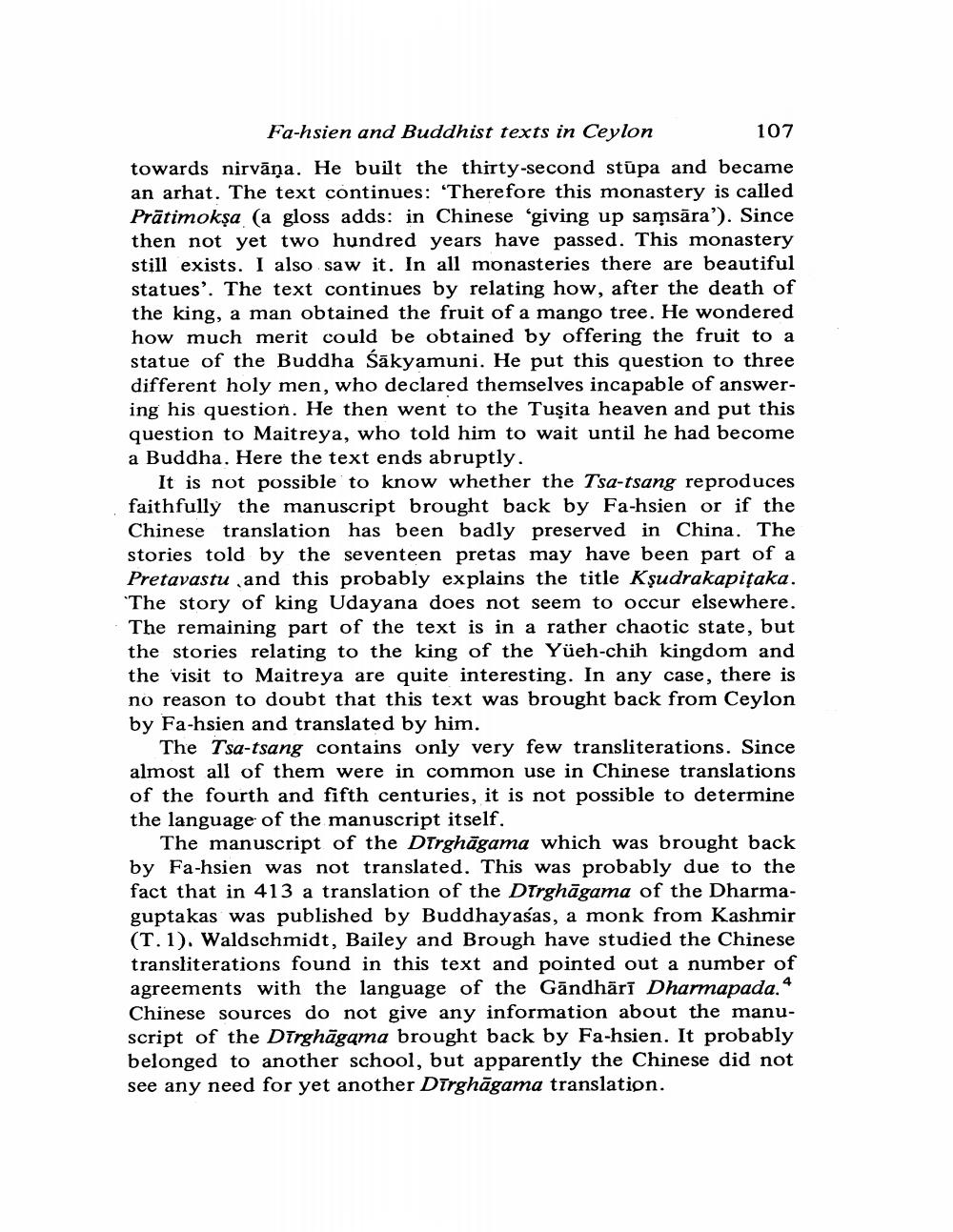________________ Fa-hsien and Buddhist texts in Ceylon 107 towards nirvana. He built the thirty-second stupa and became an arhat. The text continues: 'Therefore this monastery is called Pratimoksa (a gloss adds: in Chinese giving up samsara'). Since then not yet two hundred years have passed. This monastery still exists. I also saw it. In all monasteries there are beautiful statues'. The text continues by relating how, after the death of the king, a man obtained the fruit of a mango tree. He wondered how much merit could be obtained by offering the fruit to a statue of the Buddha Sakyamuni. He put this question to three different holy men, who declared themselves incapable of answering his question. He then went to the Tusita heaven and put this question to Maitreya, who told him to wait until he had become a Buddha. Here the text ends abruptly. It is not possible to know whether the Tsa-tsang reproduces faithfully the manuscript brought back by Fa-hsien or if the Chinese translation has been badly preserved in China. The stories told by the seventeen pretas may have been part of a Pretavastu ,and this probably explains the title Ksudrakapitaka. *The story of king Udayana does not seem to occur elsewhere. The remaining part of the text is in a rather chaotic state, but the stories relating to the king of the Yueh-chih kingdom and the visit to Maitreya are quite interesting. In any case, there is no reason to doubt that this text was brought back from Ceylon by Fa-hsien and translated by him. The Tsa-tsang contains only very few transliterations. Since almost all of them were in common use in Chinese translations of the fourth and fifth centuries, it is not possible to determine the language of the manuscript itself. The manuscript of the Dirghagama which was brought back by Fa-hsien was not translated. This was probably due to the fact that in 413 a translation of the DTrghagama of the Dharmaguptakas was published by Buddhayasas, a monk from Kashmir (T.1). Waldschmidt, Bailey and Brough have studied the Chinese transliterations found in this text and pointed out a number of agreements with the language of the Gandhari Dharmapada.* Chinese sources do not give any information about the manuscript of the Dirghagama brought back by Fa-hsien. It probably belonged to another school, but apparently the Chinese did not see any need for yet another Dirghagama translation.




